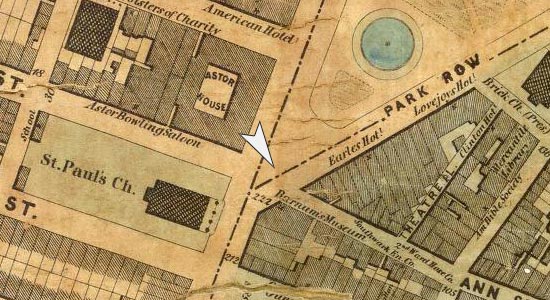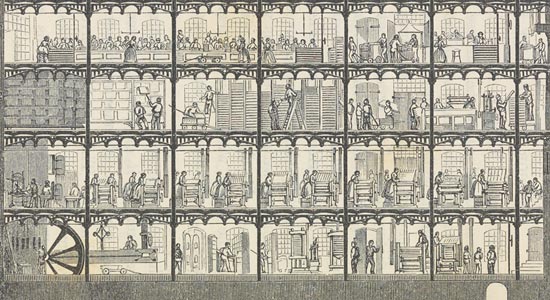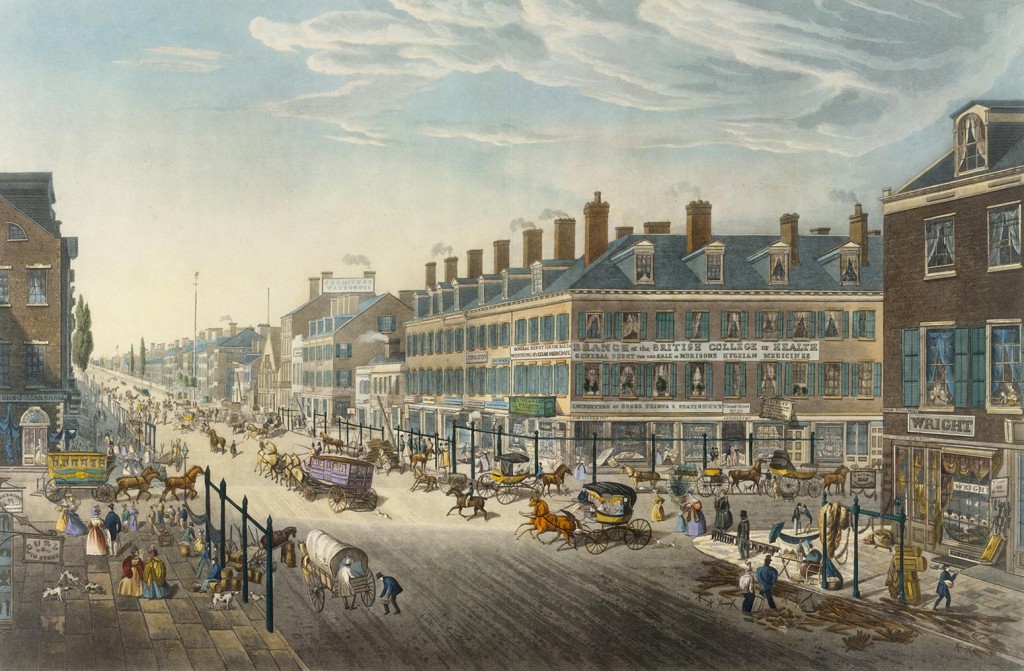Thomas Hornor (artist and etcher)
John William Hill (aquatinter)
Broadway, New-York. Shewing Each Building from the Hygeian Depot Corner of Canal Street to beyond Niblo’s Garden
Printed by W. Neale; Published by Joseph Stanley & Co., 1836
Aquatint and etching with hand-coloring
17 3/4 × 27 1/8 in. (45.1 × 68.9 cm)
The Metropolitan Museum of Art, The Edward W. C. Arnold Collection of New York Prints, Maps and Pictures, Bequest of Edward W. C. Arnold, 1954, 54.90.703
New York became the nation’s de facto commercial capital in the years after the opening of the Erie Canal in 1825. This view of Canal Street and Broadway by British-born artist-surveyor Thomas Hornor is emblematic of the city’s rapid northward expansion in the wake of the economic boom and the spectacle of consumer culture that defined city street life. Here the intersection’s frenetic pace is apparent: shops selling wigs and hats are set against images of workers in the streets and seamstresses in second-floor windows, while ladies promenade in their finery up Broadway and horse-drawn carriages move throughout the frame in every direction.
— Andrew Gardner



